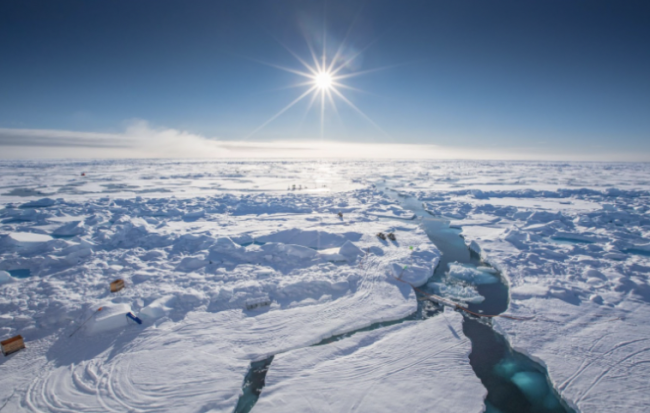Sea Ice, The Character
In this activity, student's will compare and contrast the different structures of freshwater ice and seawater ice with a hands-on lab. Learning about what makes sea ice so unique in the Arctic will be guided by the driving questions: How does saltwater sea ice differ from freshwater ice? What is sea ice like in the Arctic? and Why is sea ice important in the Arctic?
Context for Use
MOSAiC was an unprecedented international research expedition to study the physical, chemical, and biological processes that couple the Arctic atmosphere, sea ice, ocean, and ecosystem. On the MOSAiC Expedition, the scientific team depended on sea ice for research. As the German Icebreaker Polarstern drifted with the sea ice, scientists and crew walked on the ice every day and studied it along with the Arctic’s atmosphere, ocean, ecosystem, and biogeochemistry.
In this lab, students will look at different kinds of sea ice formations seen during the MOSAiC Expedition and be asked to compare saltwater and freshwater ice cores and their attributes.
Sea Ice, The Character is one of four activities in the The Drifting North Polar Planetarium Experience Unit that invites students to explore what it was like to participate in the MOSAiC expedition to the North Pole.

Polar landscape photographed by Lianna Nixon during the MOSAiC Expedition.
Goals Header
What Students Will Do
In this activity, students will:
-
Learn about sea ice growth, different types of sea ice, albedo, and more to prepare them for the hands-on lab activities.
-
Think about the differences between the freshwater and saltwater ice they are about to observe and write down their hypotheses of what will happen during the melting ice core activity.
-
Observe the brine channels that form on the saltwater, and the melt rate of saltwater versus freshwater.
-
Watch a talk from MOSAiC atmospheric scientist Jessie Creamean who studies the relationships between marine animals and the atmosphere.



